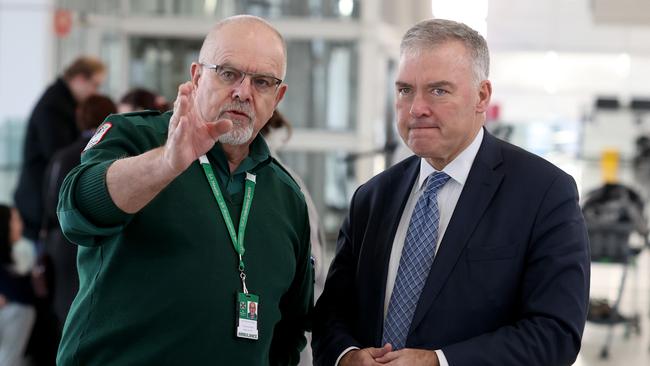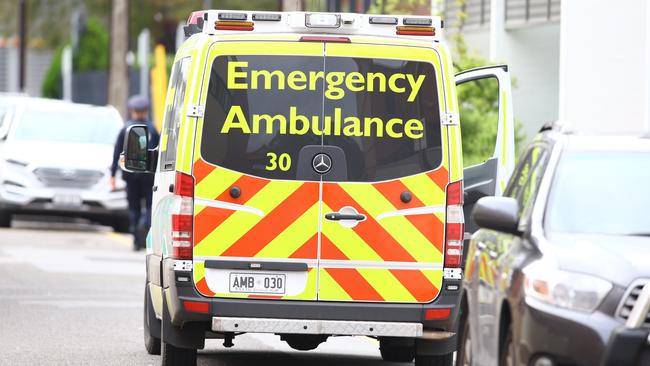SA Ambulance Service report finds more ambulances needed
Two people died and dozens more were in unnecessary danger amid ballooning delays, a new ambulance report has found.

SA News
Don't miss out on the headlines from SA News. Followed categories will be added to My News.
Ambulance delays have surged since July last year, resulting in dozens of cases that put patients in unnecessary danger – including two who died.
The revelations have emerged from a report into ambulance waiting times commissioned in November by South Australian Ambulance Service.
It found a “concerning trend” of increased ambulance delays reported between July and November 2020, which had continued to grow since the report began.
A total of 38 cases were found where a delayed response caused or had the potential to cause an “adverse event” to a patient.
Eight of those cases were found to have resulted in a “poor patient outcome”, which included two deaths.
The worst of the cases included:
A PATIENT who had low blood pressure, a high heart rate, was hypothermic and suffering abdominal pain. An ambulance was dispatched 37 minutes after a triple-0 call and arrived 22 minutes later. The patient died an hour after arriving at the emergency department.
A SINGLE paramedic arriving at a scene 18 minutes after a triple-0 call to find the patient in cardiac arrest. Additional resources were dispatched five minutes later but the patient died at the scene.
A CALLER who was suffering a stroke cancelling their ambulance call out and self-presenting to an emergency department when they were told, 25 minutes after calling triple-0, that there was no estimated time of arrival for an ambulance.
AN ambulance crew that arrived 70 minutes after being called out and could not get a paramedic for a patient who suffered a brain haemorrhage. The patient, who arrived at hospital more than two hours after a member of the public called triple-0, had a brain injury and was hospitalised for 42 days.
A further 12 cases were deemed to have a “potential high risk” because of delay and another 16 had “potential risk”.

They included a case of parents calling triple-0 at 7.30pm one evening after their 15-year-old daughter tied clothing around her neck and threatened to strangle herself.
An ambulance arrived the next morning – 12 hours and 47 minutes after the emergency call.
The report found the ambulance service’s ability to respond to call outs was “suboptimal” at times of increased calls.
It found emergency dispatchers were often “overwhelmed and unable to complete required tasks such as call backs or continue to monitor cases”.
“(Dispatchers) are also seemingly being required to make clinical decisions regarding which case will receive a response over other cases. This means many decisions are based on locality or entitlements and not on clinical need,” the report read.
It recommended providing more ambulances, making a senior clinician available to dispatchers when there was a surge in cases and reviewing the priority given to cases of unconsciousness and fainting.
The report will now be sent to the ambulance service’s Clinical Governance Committee for further recommendations.
SAAS chief executive David Place said staff had been “actively encouraged” to report long wait times “so that we could undertake this review”.
However, he said the cases amounted to 0.03 per cent of all call outs.
“Let’s be clear, this report is not an illustration of organisational failures or adverse
incidents,” Mr Place said.
“The report demonstrates SAAS’ transparency and commitment to constantly improve its service.”
Health Minister Stephen Wade said the State Government had a plan to “put more crews on the road and better match ambulance demand with ambulance availability” but it was being delayed by pay negotiations.
“The government is determined to eliminate ramping and reduce ambulance delays, we are committed to roster and work practice reform, and we are investing additional resources,” Mr Wade said.
More Coverage
Originally published as SA Ambulance Service report finds more ambulances needed




